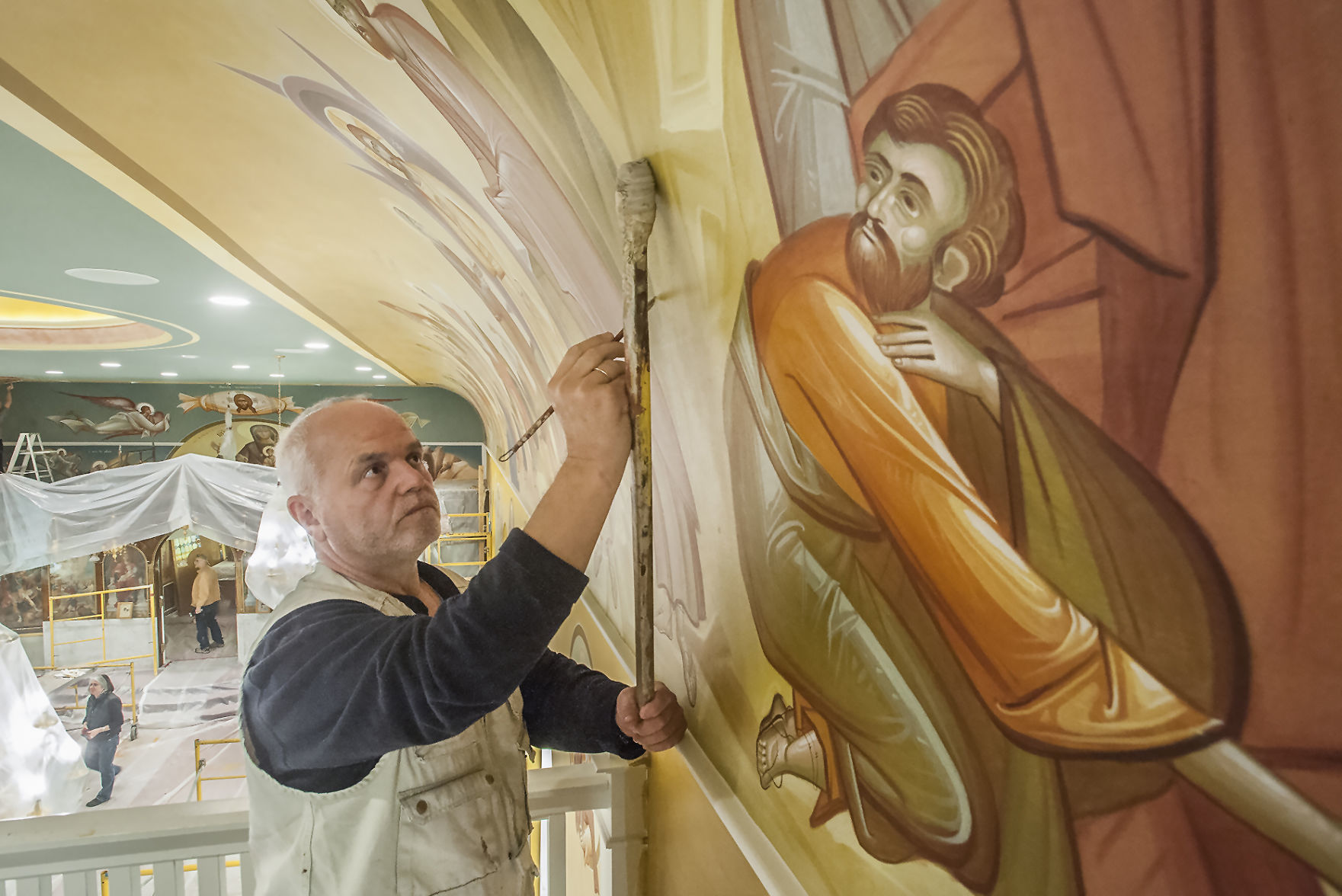
Her arms are stretched out and the Christ Child is enthroned within her. On the Apse, the area behind the Altar Table in the Sanctuary, is the icon of the Virgin Mary. Orthodox Church buildings often have icons painted on the wall. The Throne is the seat of the Bishop when he presides over the Services of the Church and is adorned with an Icon of Christ as High Priest. On the Solea we will also find the Pulpit, Bishop’s Throne and Chanter’s stand. There are usually found small tables for the sacraments. The area immediately in front of the icon screen is called the Solea where a majority of the sacraments and services are celebrated. The icons of the Archangel are painted on the doors leading into the Sanctuary for it is they who guard the entrance into the Kingdom of Heaven. On the left side the Virgin Mary with Christ as a child, St George the patron saint of our Church, the Archangel Michael and Sts Constantine and Helen. On the right side of the Beautiful Gate are the icons of Jesus Christ, St John the Baptist, the Archangel Gabriel and St Demetrios. There is a traditional order for the placement of the Icons on the Iconostasion. To the left of the Altar is an Table of Preparation where the Holy Gifts of Bread and Wine are prepared for the celebration of the Divine Liturgy. Directly behind the altar is a cross with an icon of Christ Crucified. On the Altar Table are the Tabernacle in which the Reserved Sacrament of Holy Communion is kept, the Book of the Gospels, the blessing cross, and candlesticks. Behind the Iconostasion is the Holy Altar Table. Separating the Sanctuary, or Altar area, from the Nave, is the Iconostasion, or Icon Screen. Here they also venerate the icons as they prepare to enter the nave where the people of God gather to worship. Here the faithful light their devotional candles as a reflection that as Christ is the light of the world, so are they to reflect that light in their lives. The Narthex serves as the area where the faithful prepare themselves to enter the main Church. The interior is divided into three main sections: The Narthex, the Nave or Church proper, and the Altar area. The design as well as the traditional adornment of the interior of our Church is based on this concept.
It has been said that the Churches of Western Christianity with traditional Gothic design try to reach toward heaven, while the structures of Eastern Christianity bring a little of Heaven down to earth. The message in Greek is “The Lord has looked down from heaven upon the sons of men to see if there are any who understand, Who seek after God.”(LXX, Psalms 14:2) The lower level of the dome features several Prophets of the Old Testament: Moses, David, Solomon, Samuel, Elijah, Elisha, Isaiah Ezekiel, Jeremiah, Daniel, Malachias and Zacharias. Held up by six angels, the ring held up by the angels is called the ‘glory’ in Greek. In the dome is painted the icon of “Christ the Almighty.” The painted dome, or the spacious, all embracing ceiling, gives the impression that in the Kingdom of God, and in the Church, Christ “unites all things in Himself, things in heaven and things on earth,” (Ephesians 1:10) and that in Him we are all “Filled with all the fullness of God.” (Ephesians 3:19).

It does so by using the dome or the vaulted ceiling to crown the Church building, the house of the Church which is the people of God. Orthodox Church architecture reveals that God is with men, dwelling in them and living in them through Christ and the Holy Spirit. The fact that Christ the Emmanuel (which translated means “God with us”) has come, determines the form of the Orthodox church building. This style is characterized by the attempt to reveal the fundamental experience of Orthodox Christianity: God is with us. In the long history of the Orthodox Church, a defined style of Church architecture has developed.


 0 kommentar(er)
0 kommentar(er)
